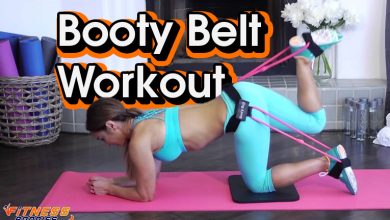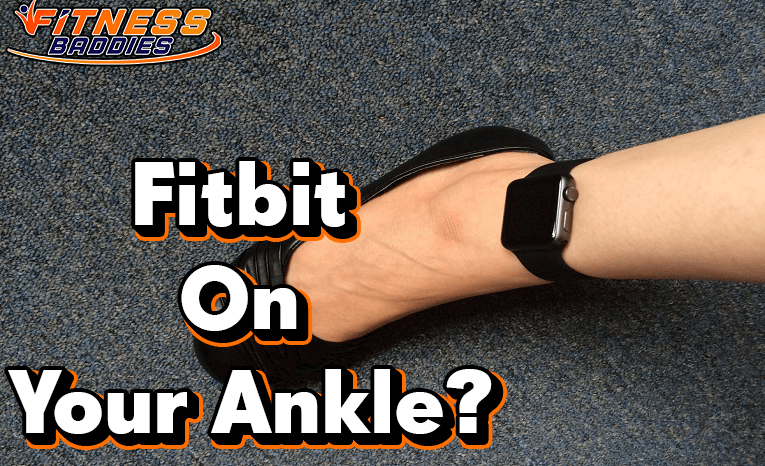Zottman Curl: How To, Variations, Benefits, Muscles Worked, Beginner Mistakes, & Alternative Exercises
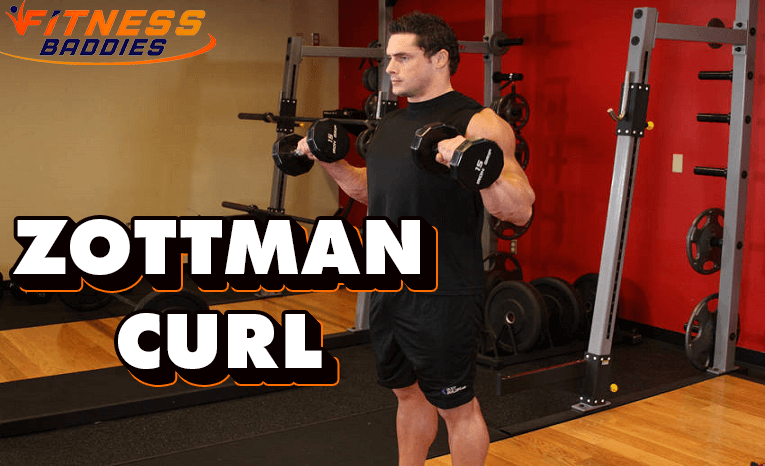
Forearms are one of the most neglected muscle groups by trainees nowadays, probably because of it’s boring and slightly painful nature due to the high tension placed on the wrist joint.
This, when coupled with the fact that forearm training almost always needs to be done at the end of a workout to prevent grip fatigue from affecting other exercises, causes most lifters to skip it entirely.
A common misconception is that there is no need for forearm training since arm exercises like the barbell row or shrug will exercise grip strength enough, rendering isolated training useless. However, this only applies to those who are only beginning to lift weights and more so for youth weight lifting training, since they are very susceptible to stimulus. As a lifter progresses, it will not be enough.
This is why it is not uncommon to find trainees with an unbalanced look due to overdeveloped biceps and triceps but underdeveloped forearms. Moreover, forearm strength is the sole determining factor for grip strength, so a lack of development in the forearm can lead to plateaus in other exercises that require it, such as the deadlift, the weighted pull up or the barbell row that need a strong grip.
Insufficient forearm development can be worked around with straps and varying grips, but they are not a permanent solution, the subject will continue to grow in strength until even the measures aren’t enough.
The right way is to incorporate better training practices and arm exercises selection, in order to cause forearm development. One such way is the Zottman Curl, which is a variation on bicep curls that places greater emphasis on the forearm and thus helps build stronger arms.
By performing the Zottman curl instead of traditional curls, lifters get a “2×1” effect, since they can train both lower arms and upper arms without spending more workout time.
What is a Zottman Curl?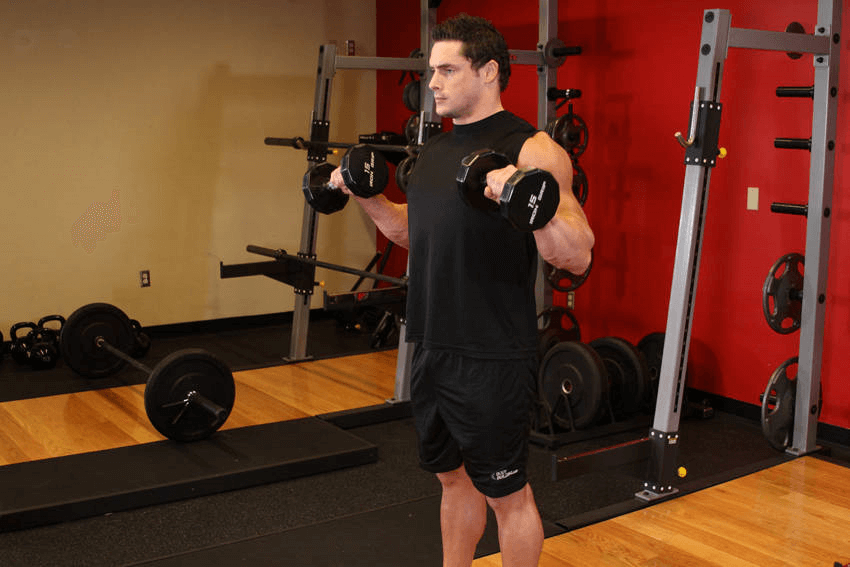
As previously mentioned, the Zottman Curl is a variation of the traditional bicep dumbbell curl that places a greater load on the forearm muscles. It’s pretty much all about hitting different muscles in the hands with light weights.
It was invented by 19th-century strength athlete and strongman George Zottman, and popularized when it was featured in “The Gold’s Gym training encyclopedia”.
In broad strokes, the Zottman curl is a combination of the bicep curl and reverse bicep curls, the concentric portion of the exercise occurs as normal, but for the eccentric portion (the negative), you rotate your wrists to have your palm facing downwards, which will put a greater load on the forearm to build muscle and both concentric as well as eccentric strength.
Done in proper form, it tops other other arm exercises as far as delivering direct forearm training in a time efficient way, helping you achieve results in record time.
How to Do the Zottman Curl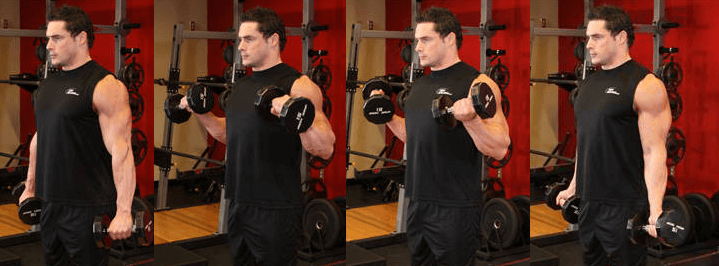
Here is how to do the Z curl with proper form, step by step.
Step 1
Stand up with your back straight, feet shoulder-width apart, while holding a dumbbell in each hand. Those looking for greater forearm activation to build muscle can choose to use a false or thumbless grip, though a conventional grip can be used just fine.
Step 2
Curl the dumbbells upwards with a supine grip – palms facing up – until your biceps are fully contracted. The dumbbells should be level with your shoulders.
Step 3
Hold the contracted position for one second, then rotate your wrists into a prone position, palms facing down. Then slowly lower the weight back to the starting position, with your biceps and arms fully extended.
Step 4
Repeat with your other arm, alternating each other until you reach the desired number of repetitions for one arm at a time. You can also perform these bilaterally, using both arms at the same time.
Like this video:
How the Zottman Curl Works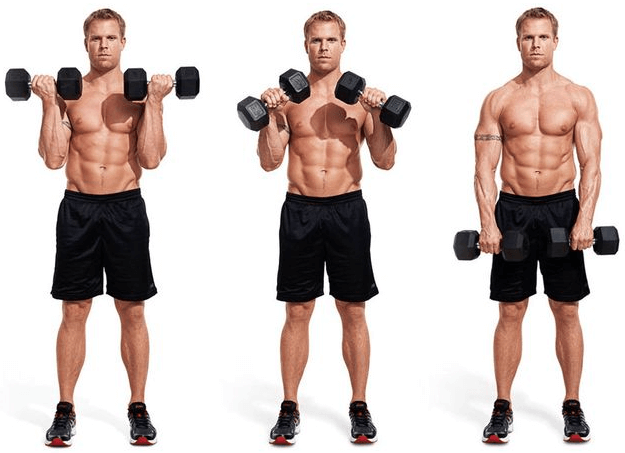
By combining the biceps curl and the reverse curl into one, trainees can get the “best of both worlds” in one exercise. The reverse dumbbell curl can not be performed with enough weight to develop your long head bicep, while the traditional biceps curl does not work the forearms.
By performing the first portion of the exercise as a biceps curl, you can use substantially heavier loads, which will provide bicep development as well as allowing you to perform the second portion with a much heavier weight, improving forearm development as well.
Benefits of the Zottman Curl
Z curls have many benefits, we name and discuss a few below.
Strength and Size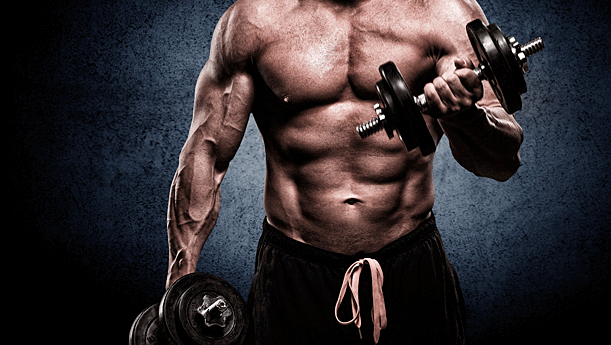
As is to be expected of resistance training, performing the Zottman Curl will eventually lead to strength and muscle mass gains, both for your biceps and forearms, this is one of the factors that differentiate weight exercises from calisthenics. This is especially true for your forearms, since you’ll be able to use heavier loads than on forearm isolation exercises. palms face
It’s also known that exercise increases metabolism and this helps greatly for weight loss. Another thing to do to lose weight, since we’re on the subject, is by sticking to a proper diet plan like taking one meal a day or fasting, and limit or stop eating sugar entirely.
Improved Looks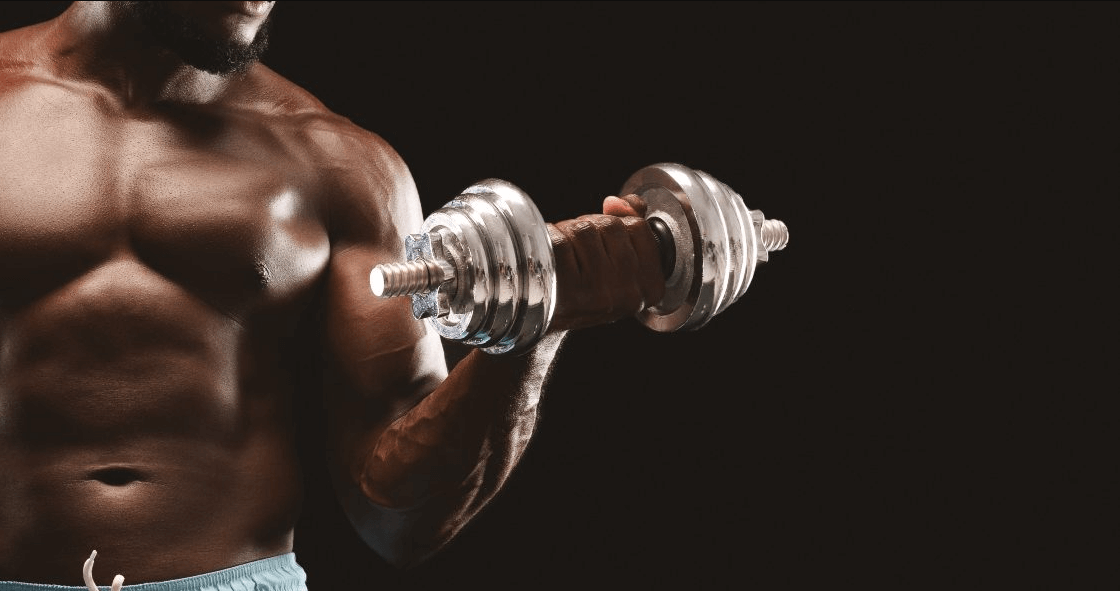
The forearm is, in most occasions, the only part of the arm that is fully visible, since even when wearing short sleeve shirts, your biceps and triceps are partially covered. As such, gaining size on your forearms is one of the easier ways to have your arms look bigger.
Those training for aesthetics would benefit a lot from introducing forearm work into their routines.
Improved Grip Strength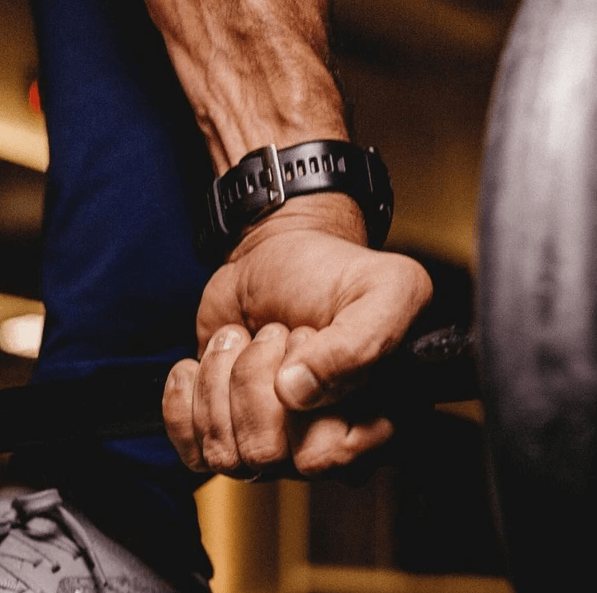
With increased size, comes increased strength, which in this case has large carryover into other exercises. Better grip strength will allow you to hold on to your barbell with greater loads on exercises like deadlifts, barbell rows, lat pulldowns and more. In a sense, improving grip strength can allow athletes to progress on their entire body.
Needless to say, this also allows you to achieve safer training, as you’re unlike to drop the weights due to a weak grip, which can be a risk to yourself and others. Besides, dropping weights can potentially lead to bent barbells and/or damage to your backyard home gym floor as well.
More Efficient Workouts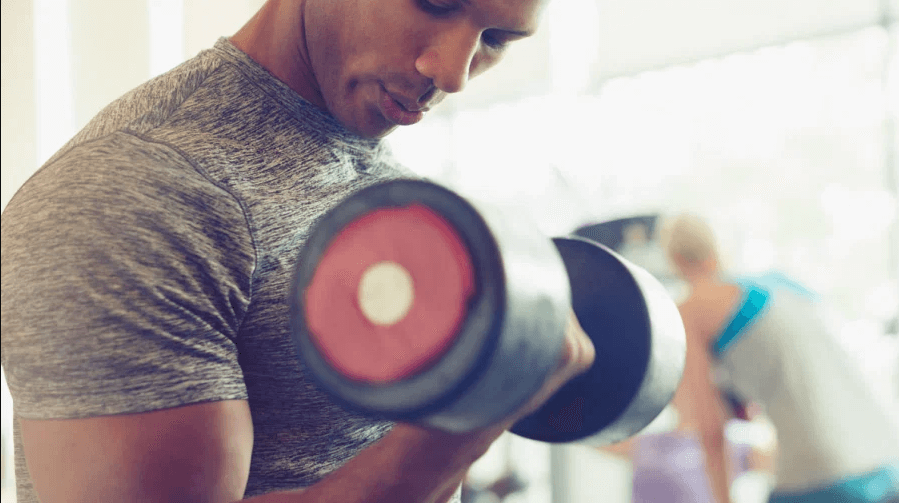
While those striving to maximize their forearm growth will still need isolated forearm work, the Zottman curl is a great starting point. After all, the Zottman curl targets this area quite effectively and requires no extra time in a workout, and can be performed instead of regular dumbbell curls.
People with tight schedules, who can’t train for several hours, can benefit from the “two for one” nature of the exercise. It’s easy to perform and time-efficient too, you won’t need to measure your fitness level before performing it, unlike other advanced exercises, or exercise challenges like the ones I recently did; doing 100 jumping jacks a day, doing squats every day for 3 months, or doing 100 pushups, 100 sit-ups, 100 squats for 30 days.
These require a certain level of fitness to pull off.
Sets and Reps for the Zottman Curl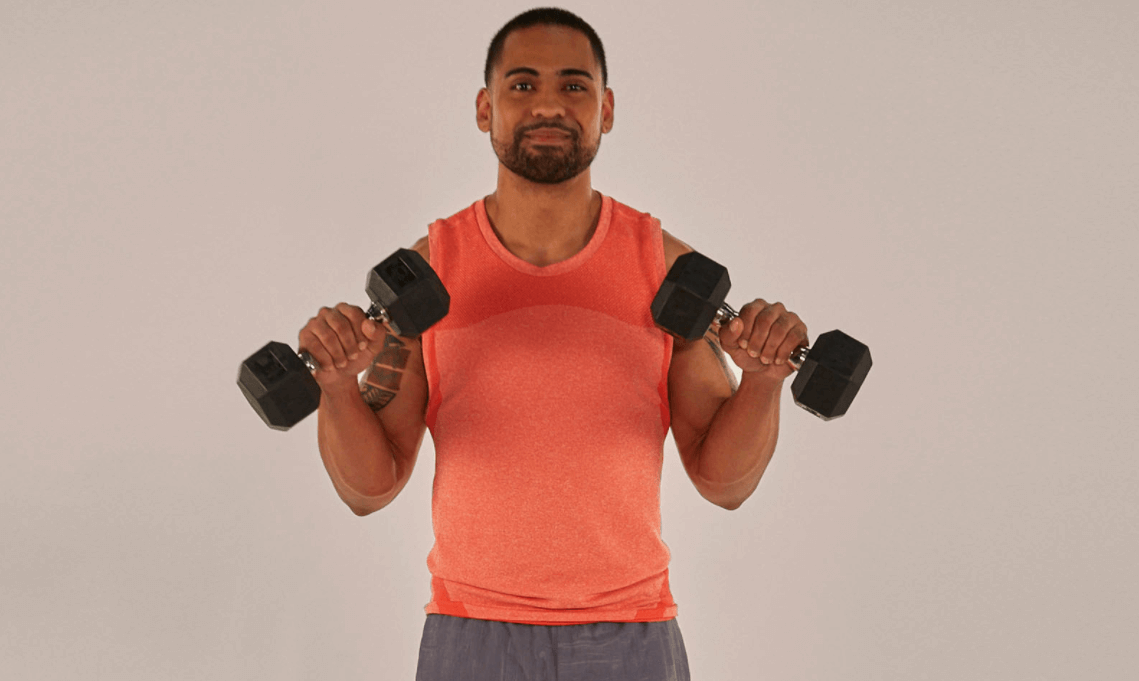
For beginners to this kind of upper body workouts, the Zottman curl will still have to be performed with lower weights than you would use on a traditional bicep curl, and they will benefit from higher rep ranges, such as 12-15 or 15-20 reps per set for a total of 3 sets.
As you progress and gain strength, you should aim to transition back to lower rep ranges, such as 8-12 and working with heavier weights to maximize muscle growth. It helps to have several sets on your dumbbell rack for this.
However, if you don’t have the space for a rack, then a set of budget adjustable dumbbells should save you the hustle.
Note About Grip Fatigue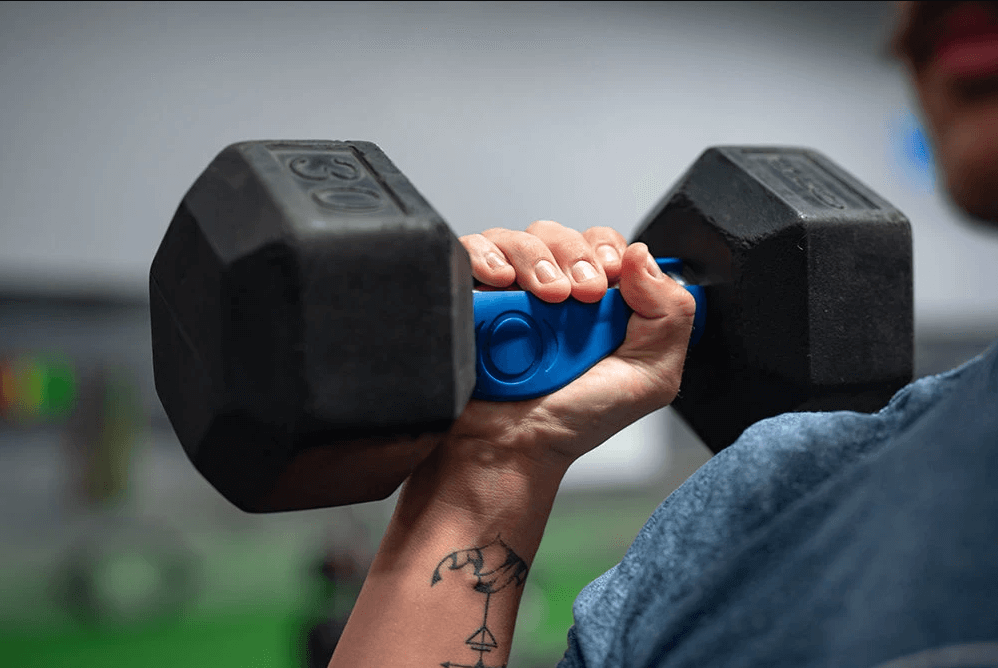
As previously mentioned, forearms are integral for performing the deadlift and -to some extent – the barbell row. You should keep this in mind when introducing arm exercise into your workouts.
It is not uncommon for trainees to fatigue their forearms before performing heavy lifts, hindering their ability to hold on to the weight correctly. A simple rule of thumb for avoiding grip fatigue is to have at least one day of rest between heavy lifts and forearm training.
Just to clarify, a day of rest does not mean that you shouldn’t work out. This would be a good time to do some cardio in….just that forearm specific training should be avoided.
Muscles Worked
Here are the major muscle groups worked by the Zottman curl.
Primary Muscles
Primary muscles are those that control the movement performed. In short, these are the main muscle you’re targeting and that will receive most of the stimulus.
Bíceps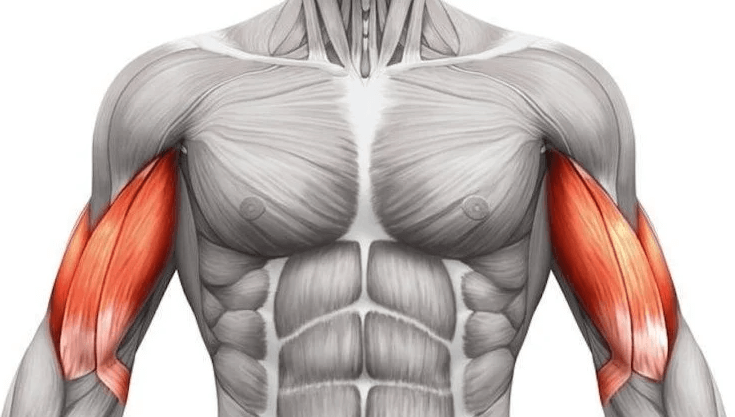
Like most other bicep exercises, the biceps is the primary muscle worked with the Z Curl. The biceps is composed of two heads – long and short – which work together during contraction to bring the load up.
Brachioradialis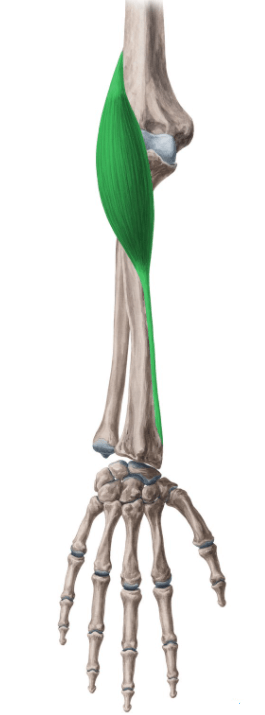
The brachioradialis is the biggest and most visible muscle in the forearm, which is in charge of flexion of the elbow at different angles as well as pronation and supination. During the Zottman Curl, or biceps brachii exercise, the brachialis will receive the most stimulus when resisting gravity as you lower the weight in a slow and controlled manner.
Another exercise that helps with this area is the military press, it’s also a great exercise to do if your triceps are not growing at the rate you want, that way you can have big arms all around, biceps and triceps.
Secondary Muscles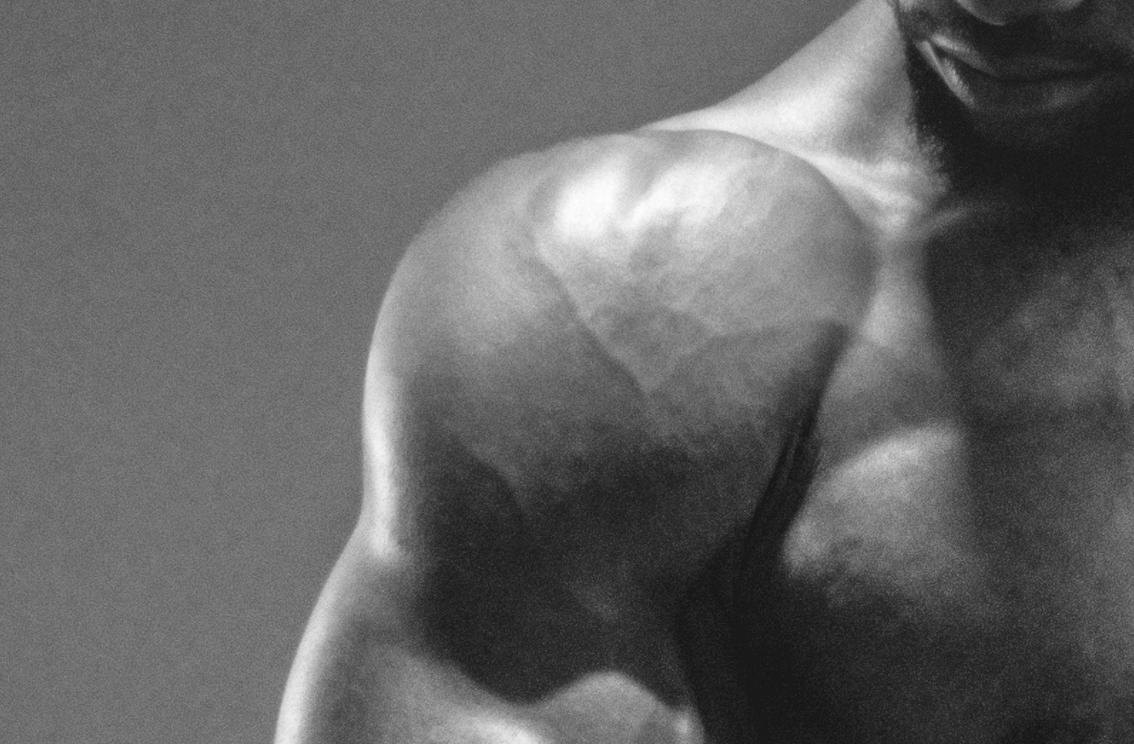
Secondary muscles are those that are not directly targeted by the exercise, but that assist primary muscles in order to provide stability and complete the exercise.
In the Zottman Curl, the deltoids, upper and middle traps and abdominals work to stabilize your mid section as you lift the weight, while a small muscle below your biceps and brachialis assists in lifting the weight. Another workout that works these muscles is the seated tricep press, and another exercise that targets the abdominals specifically is the double crunch.
I went over the topic of working the biceps and triceps on the same day before, you should consider reading it if you want to mix Zottman curls with reverse curls or other compound lifts that target these muscles.
Common Mistakes Beginners Make During the Zottman Curl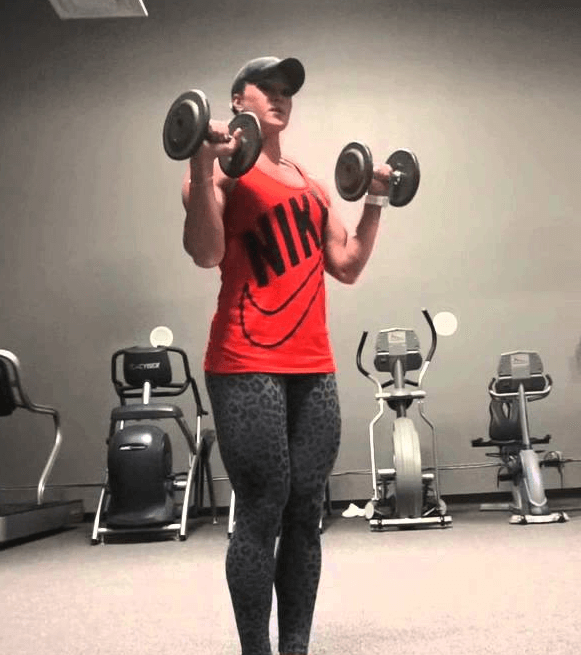
Here are the common mistakes beginners fall for when doing the Zottman curl.
Flared Elbows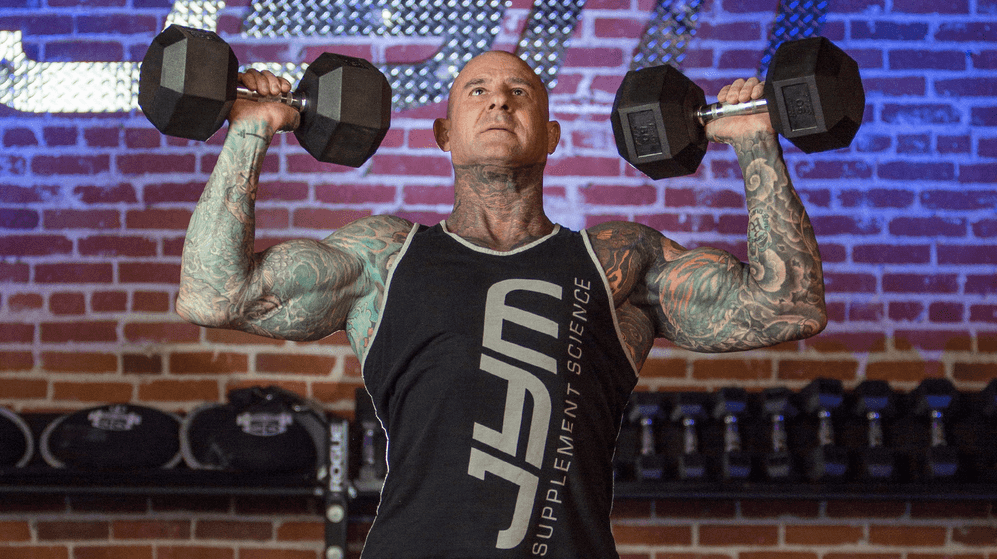
Many trainees will involuntarily flare their upper arm and especially the elbow section when performing curls, this makes the curl easier to perform, but reduces the stimulus placed on the biceps and forearms.
Keep your elbows close to your torso and engaged for better results, if you find you often keep flaring them as you curl the weights, consider lowering the weight.
Too Much Weight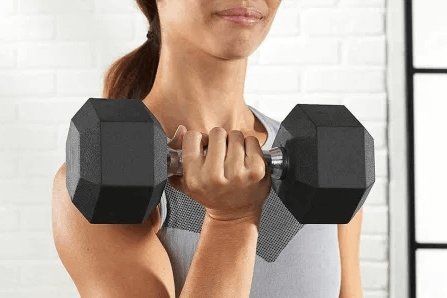
Many beginners are tempted to perform Zottman curls with the weights they use for regular dumbbell curls. However, this results in them not being able to resist the negative properly, as well as increasing risk of injury for their elbows. Use a weight that feels challenging for you, but that can still be controlled.
Rounded Back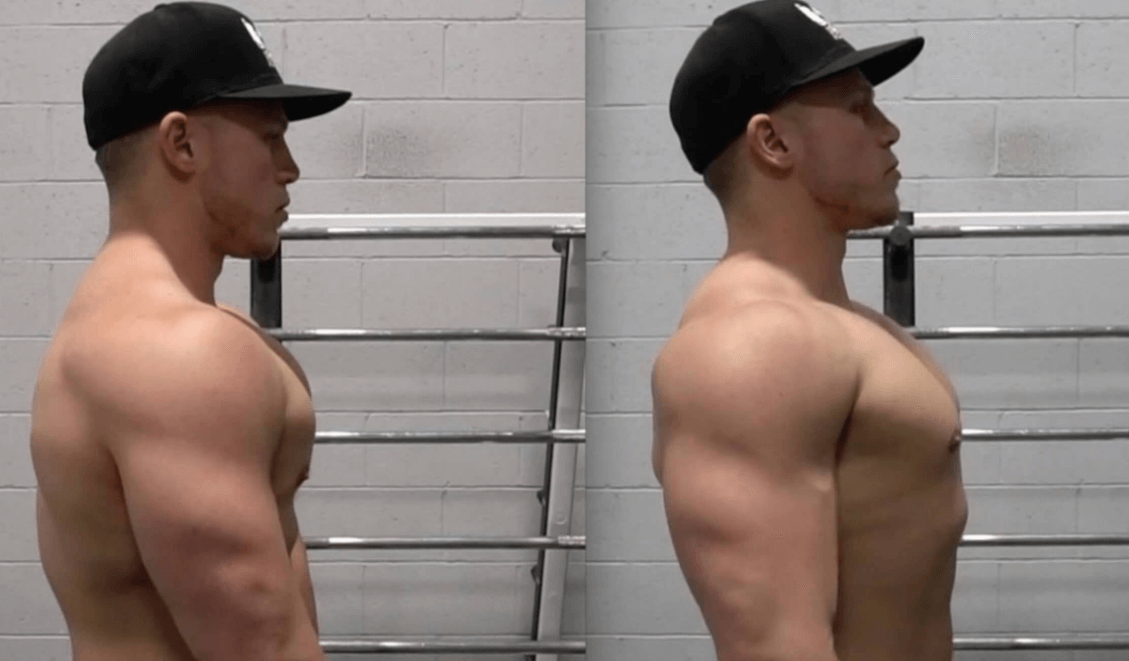
Many lifters tend to round their back when performing curls – be it the z curl itself, some zottman curl variations like the standing zottman curl and other upper arm workouts like the biceps brachii.
This puts them at risk of injury by compromising the integrity of their spine. Make sure your back is straight, your core engaged and that you’re going through the reps in a controlled manner to hit the desired muscle group.
Arched Back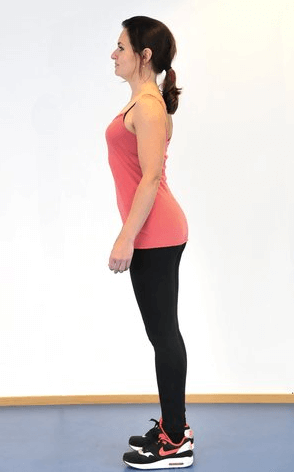
When using more weight than appropriate, many lifters will arch their backs in an attempt to “cheat” the exercise and get the weight up regardless. However, this results in less activation of the biceps, as well as increased risk of injury.
If you find yourself unable to perform the exercise without arching your back, lower the weight to achieve perfect form.
Using Momentum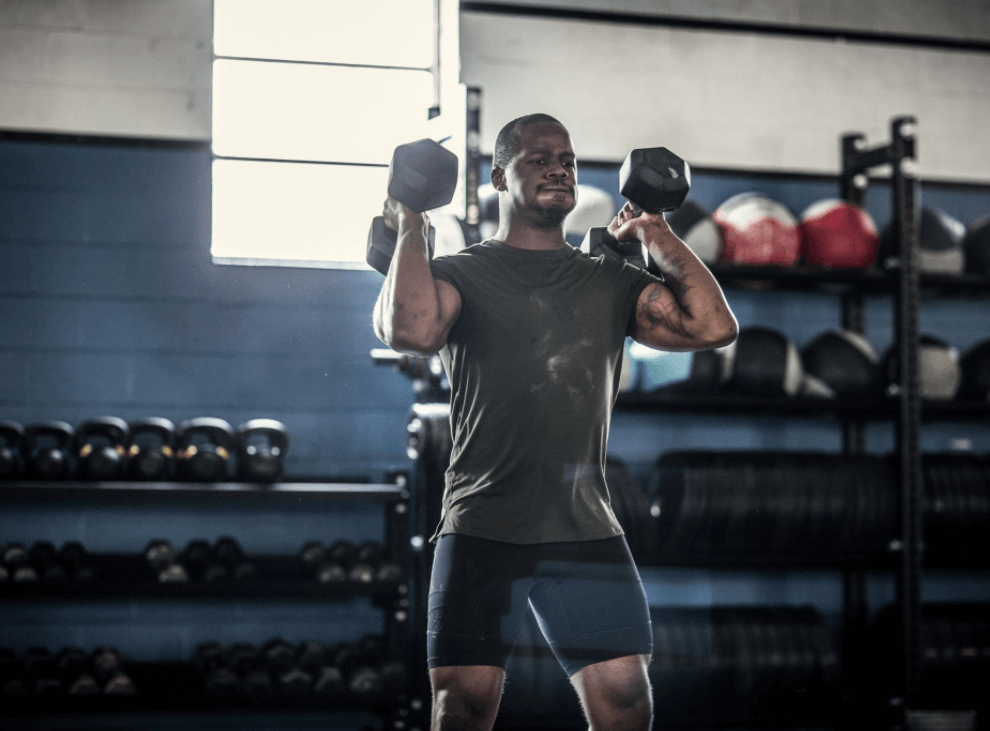
Usually seen alongside arched backs, using momentum is another way lifters “cheat” the exercise in order to use more weight than they can handle. As previously mentioned, this reduces bicep activation, so in most cases it is counterproductive.
Trust me, you’ll be better off lifting lower weights with perfect form. It feels good to make slow progress than shooting for high weights and not make any headway.
Pushing Their Elbows Forward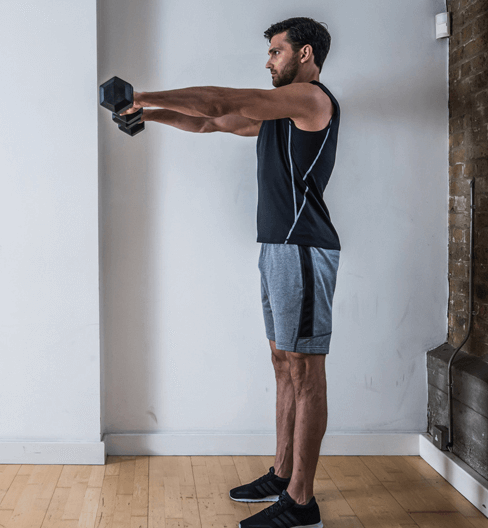
Your elbows should always remain at your sides, by pushing them forward, you’re using your front deltoids as the main muscle group moving the weights.
Not Resisting the Negative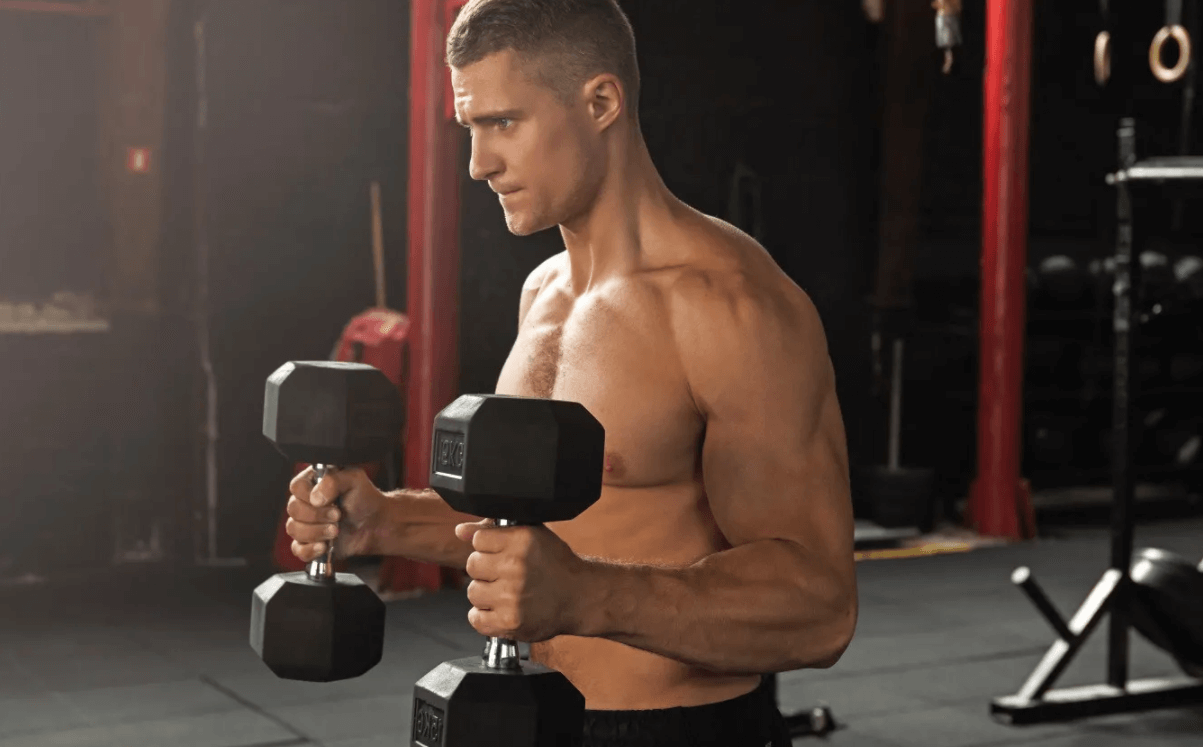
Many lifters go through each rep too fast. They explode upwards and then let the weights fall back down due to gravity. However, if you want optimal forearm activation, you need to resist gravity as much as possible. A good baseline is to count 2-3 seconds for each negative.
Alternatives and Variations for the Zottman Curl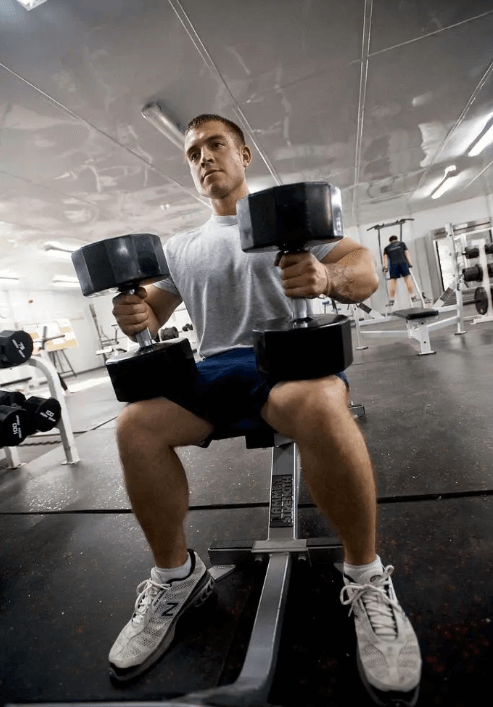
The Zottman curl has some variations and also alternatives, we discuss those below.
Reverse Zottman Curl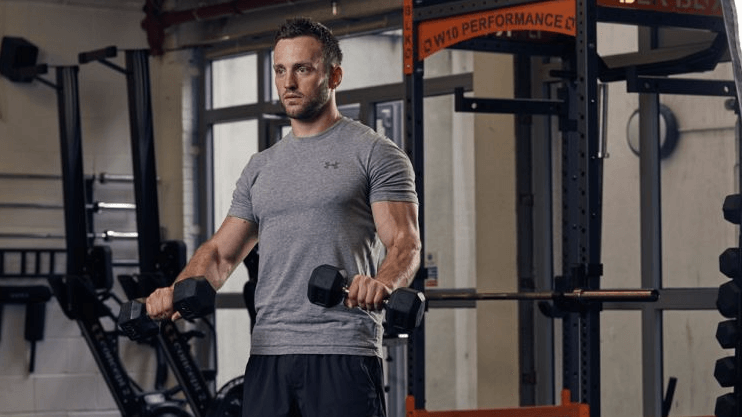
The reverse Zottman curl is a great option for those looking to target the forearm even more than a traditional Zottman Curl would. As is to be expected, the exercise is performed as a Zottman curl in reverse.
At the starting position, ensure your palms are facing the floor and curl the weight up until its level with your shoulders at the top of the movement. Then rotate your wrists until your palms are facing upwards and slowly lower it back down. Repeat for as many reps as desired.
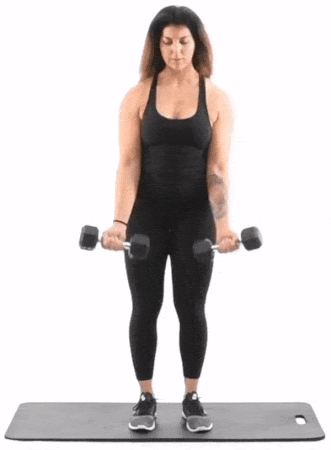
Reverse Curl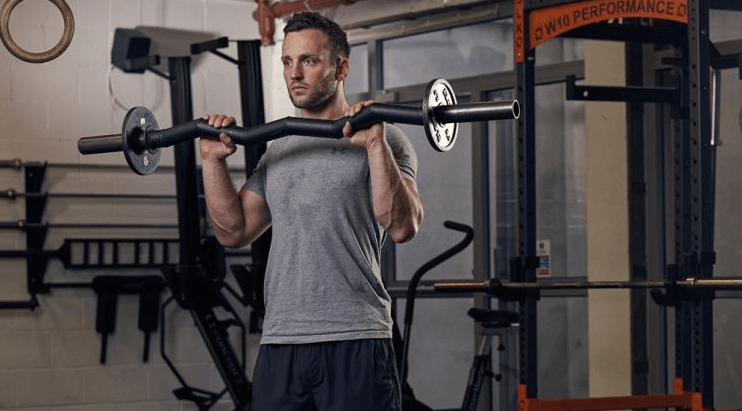
While its ability to sufficiently stimulate the short and long head biceps is limited, the reverse curl is an amazing exercise for those looking to maximize their forearm development. It can be performed with both dumbbells and barbells and even using a thumbless grip for an even bigger challenge.
The reverse curl works in the same way as the bottom part of a zottman curl. Grab the barbell or dumbbell in a pronated grip (Palms facing down) and curl it like you would a regular barbell. As always, be sure to use slow, controlled motions for maximum impact.
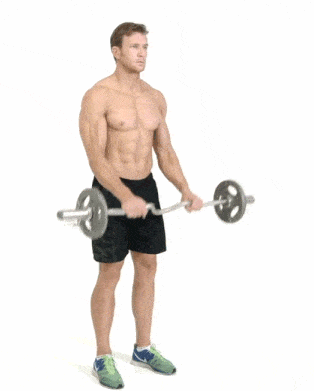
Fat Gripz 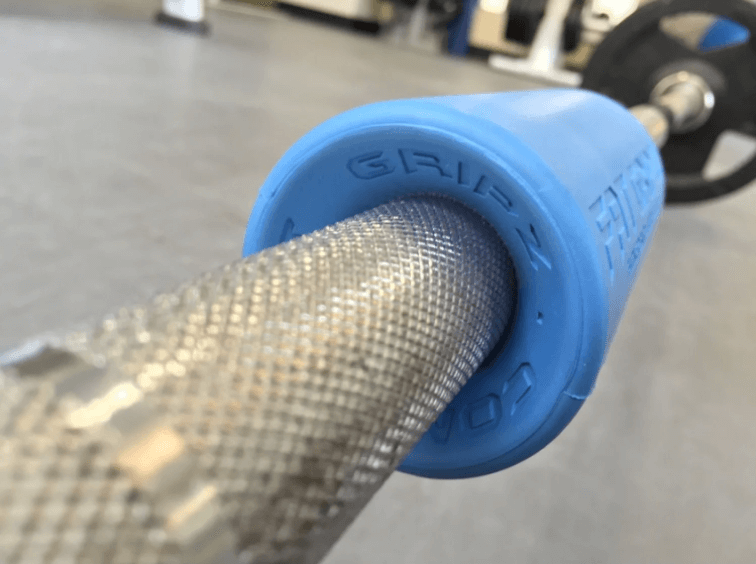
While not really an alternative exercise per se, “fat grips” are one of the different ways to turn any exercise into a challenging forearm workout. Perhaps the main reason you would want to incorporate fat grips into your exercise program is if you feel pain or discomfort during your upper body or regular forearm training.
Simply put, fat grips are a grip (quite common in the fitness world) that is manually placed around any bar or dumbbell to make it thicker. The main reason being that the thicker the bar, the harder it is to hold on to for long.
If used consistently, fat grips will lead to great forearm size and strength development, as well as grip strength progression without the need for specialized forearm training. In fact, many athletes claim that after going back to regular bars, these feel lighter and they can lift more weight.
Hammer Curls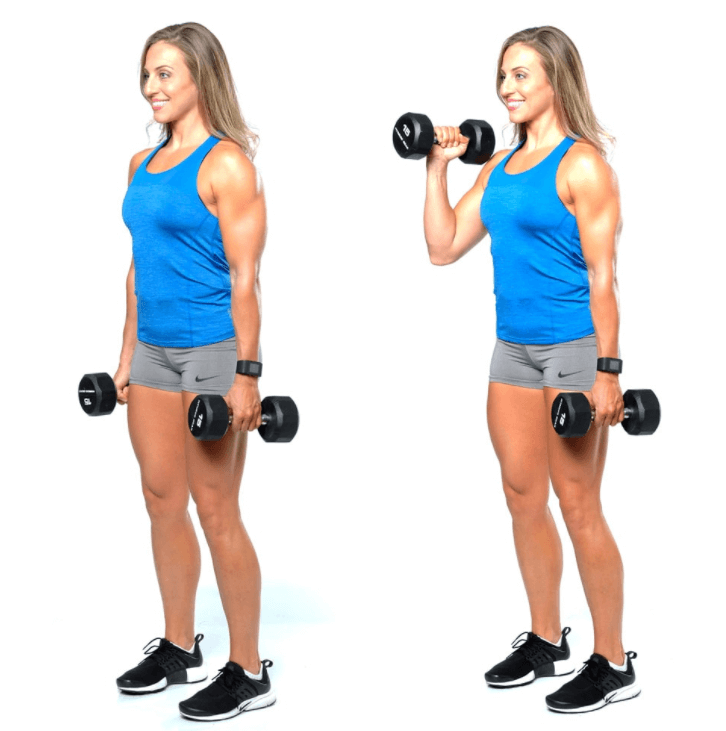
The hammer curl can be thought about as an in-between a Zottman curl and a bicep curl. It stimulates the forearm and bicep throughout the whole movement, and athletes are usually stronger than they would be in the Zottman curl, but when it comes to elbow flexion and forearm activation, it still falls short compared to the Zottman curl.
The hammer curl is performed in a similar fashion to a traditional dumbbell curl, but instead of having your palms facing upwards in a supinated position, you’ll keep your palms facing each other throughout the movement.
This will target the long head of the bicep primarily, as well as the brachioradialis, which is responsible for keeping your palms and wrists in position.
Like this video:
Wrist Curls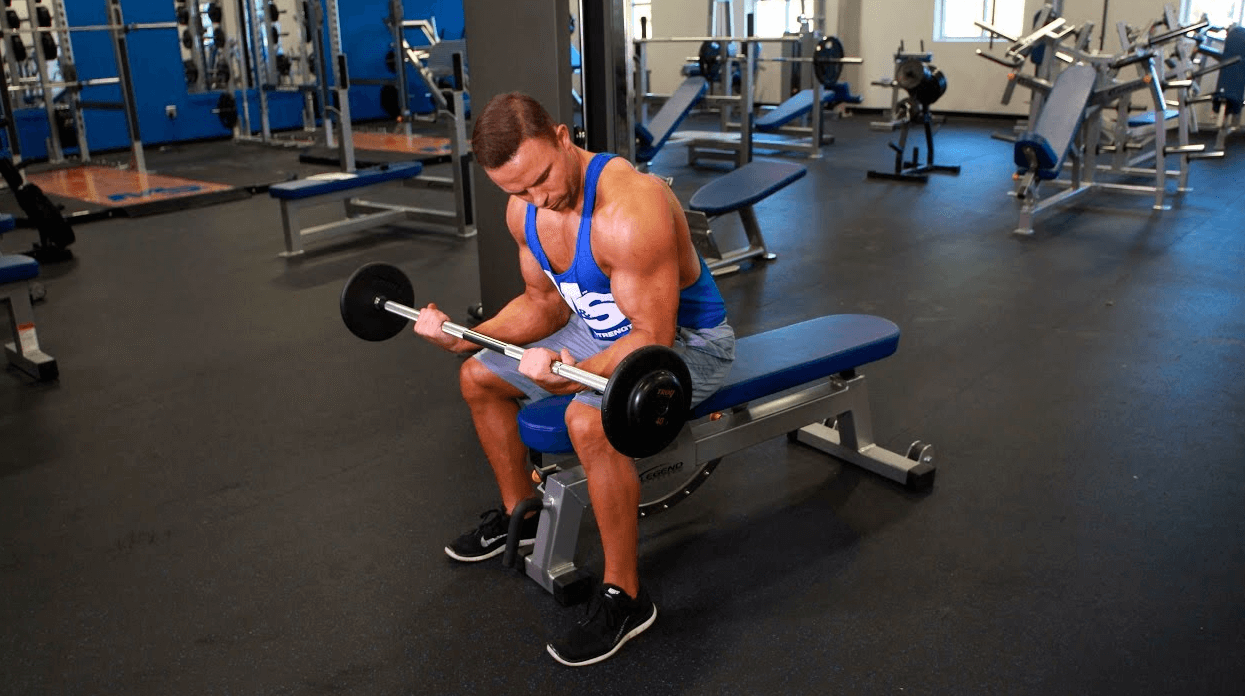
Wrist curls are a forearm isolation exercise, so anyone looking to maximize their forearm development should include them in their workout regimen. However, as an isolation exercise, they do not stimulate the bicep, which means losing the “two for one” benefit that Zottman curls provide.
How to Perform a Barbell Wrist Curl:
- Stand with a shoulder-width stance, holding a barbell with an overhand grip at shoulder width as well.
- Using just your wrists, curl the weight towards your thighs by flexing your wrists.
- Fully extend your wrist by reversing the curl.
- Your arms should be stationary, the only movement should come from your wrist.
Like this video:
By performing both curls and extension, you will target both sides of your forearm, maximizing growth and thickness.
Related Readings:
- Dumbbell Only Workouts Results
- How To Remove Rust From Weights
- Should I Train Shoulders After Chest Day?
- Crossfit For Women
- Can Stretching Make You Taller? Myth or Reality?
- The Best Workouts & Exercises for Teenage Girls (As Backed By Science!)
References:
- https://www.anabolicaliens.com/blog/dumbbell-zottman-curl
- https://forums.t-nation.com/t/zottman-curls/8527/5
- https://forum.bodybuilding.com/showthread.php?t=136140281&page=1
